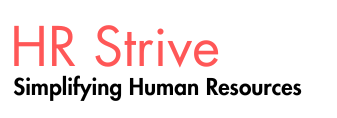Consulting Process
Consultation involves
providing guidance to organizational stakeholders. It requires the ability to
diagnose problems or identify opportunities, develop effective solutions, win
support for the solutions, and then implement them effectively. For HR, guidance
often involves using HR expertise to improve the organization's performance so
that it can take advantage of opportunities and achieve strategic objectives.
The Consultation and Analytical
Aptitude competencies combine to equip HR professionals to be organizational
problem solvers, presenting sound, evidence-based proposals to leaders to
improve performance, as shown in this case.
HR identifies a turnover trend in
a particular business segment-specifically, a higher rate of turnover than
should be expected. The head of the segment wants to know why this is happening
and suggests that the fault might be in the candidates who are put forward for
the roles.
Drawing on her analytical skills,
an HR professional gathers pertinent data and information about the segment's
workforce: which roles are most affected, the demands placed on workers in the
high-turnover roles, and other aspects of the segment's work, including
comparisons with other roles within the segment and in similar areas elsewhere
in the organization. HR finds that the employees were all identified as
potentially solid hires, with appropriate skills and competencies, that there
were no red flags raised related to employee satisfaction or performance, nor
were the employees involved in any disciplinary processes. This suggests that
the fault does not lie with the hiring process. HR engages the functional
managers in further discussion and uncovers the fact that the turnover positions
are all very high-stress and that the segment has a tendency to treat all work
as urgent and time-sensitive. There are strict deadlines, and many unexpected
activities often arise and force the individuals to work quickly and without
breaks.
Analyzing their findings, HR
identifies the causes that contributed to the high turnover. Using this data,
HR then works with the managers and the employees to identify new ways to
approach the work that will relieve some of the tension, increase breathing
space, and also provide time for breaks-that is, to make the employees feel
like they are not in a constant, never-ending sprint.
The new methodologies take time
to implement, but HR continues to consult and work with the managers and the
employees to assess the effectiveness of the changes and to overcome any
obstacles that might impede progress until the new approaches become routine
practice.
Consulting Model
Throughout the four steps that
make up the consulting model, one of HR's key responsibilities is communication
with and management of stakeholders. A stakeholder is anyone whose work or
experience is affected by the potential outcome of a change
initiative-including employees, managers, vendors, and customers.
